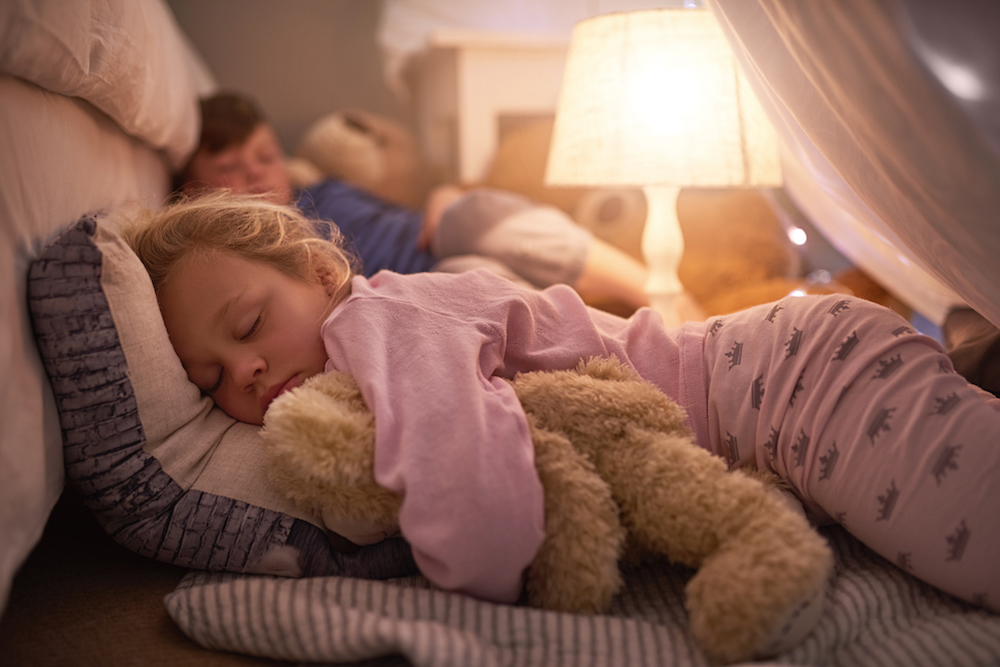
Image Source
One of the scariest, most heart-stopping moments I have endured as a father occurred when I thought I had left my youngest son’s blanket at a restaurant. To my son, this blanket is his entire world. It goes to the grocery store, to the movies and out to dinner with us. It’s the first thing he’s holding each morning, and the last thing in his possession each night. When I realized his blanket was gone (possibly forever) I was instantly thrown into full-on panic mode. In this moment, I thought my son would never be able to fall asleep again because of his strong dependency on this blanket.
This is a classic example of behavioral insomnia of childhood, the sleep-onset association type. To some degree, many children exhibit similar patterns when it comes to falling asleep. Some might rely on a cherished stuff animal, while others prefer a white noise maker or nightlight. Children want a safe and predictable environment in which to fall asleep, and these routines or objects are a part of this environment. This also applies when these children wake up in the middle of the night; they will expect the same environment as before, which can make falling back to sleep more difficult if it’s altered.
Changing or simply addressing this dependency can be a difficult challenge. We typically will recommend a process called gradual extinction. This process involves knowing where you are and where you hope to end up. You can then split this path up into a series of small steps – the more steps, the better. If your child wakes up every night at 2 a.m. to take a bottle instead of sleeping, try reducing the amount of milk/formula you’re giving them. You can then start to dilute the formula or use water in its place, but speak with your pediatrician first to make sure your child is old enough for this step. Eventually, you can try giving them an empty bottle until their dependency on the object has worn off.
There are alternatives to gradual extinction, including the extinction or “cry it out” process. This involves attempting to change the behavior or eliminate the dependency all at once without breaking the process down into several steps. This method can often produce faster results, sometimes in seven to 14 days. However, it isn’t for the faint of heart; you must be completely committed to this process in order to make it successful. You can also opt to simply accept the behavior or dependency until your child changes it on his/her own. After all, there’s nothing inherently wrong with these behavioral patterns if they’re not disrupting routines for the child or family.
It’s possible to also alter the object or environment your child is dependent on if their behavior is unfavorable or disruptive. For example, most of us know how some infants and toddlers will fall asleep with pacifiers in their mouth. Once the child is sleeping, the pacifier can easily fall out. When woken, the child often cries until the pacifier is found and placed back in their mouth. This cycle notoriously requires parental assistance. For a better alternative, a stuffed animal or blanket, which can easily be located by the child when woken, might help them fall back to sleep without further intervention. Again, speak with your pediatrician first to make sure your child is ready for this change.
Behavioral insomnia in children, especially if it’s the sleep-onset association type, can definitely be a frustrating issue for both parents and children. If you’re patient and understanding, navigating solutions to alter these behaviors is more realistic and manageable. In most cases, your pediatrician can help you with these discussions. However, if your child is exhibiting an extreme dependence or worrisome behaviors when it comes to sleeping, consider seeking evaluation from a behavioral psychologist or sleep medicine specialist.
If you're interested in learning more about Texas Children's Sleep Center or Psychology, follow these links.


